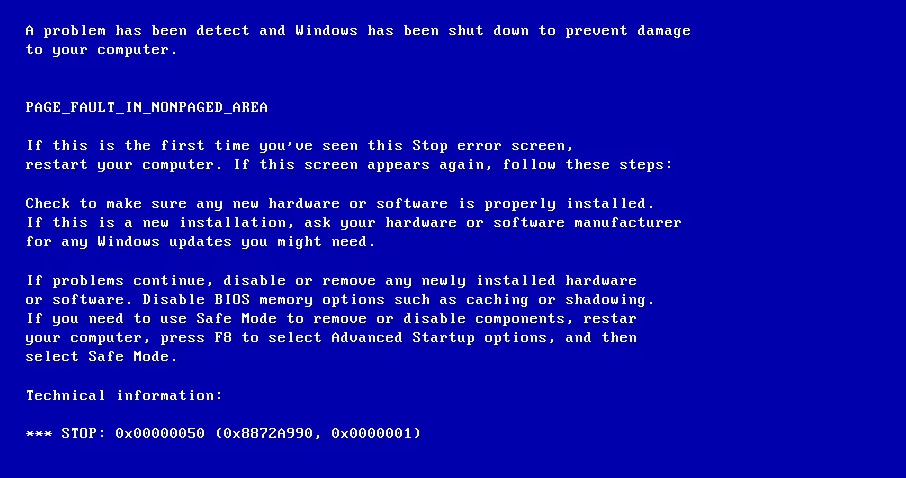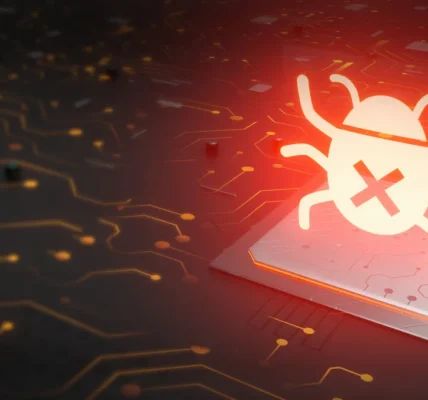Understanding Memory Corruption: Causes, Impact, and Protection

Memory corruption is a serious vulnerability in software and hardware systems that can have devastating consequences. It occurs when data in a program’s memory is unintentionally modified, which can lead to unpredictable behavior, crashes, security flaws, and even complete system failure. This type of error is often exploited by attackers to gain unauthorized access to sensitive data, execute malicious code, or cause a system to behave in unexpected ways.
In this blog post, we will explore what memory corruption is, its common causes, the risks it poses, and the best practices to protect your system from this vulnerability.
What is Memory Corruption?
Memory corruption occurs when the contents of a computer’s memory are altered unintentionally, often due to a bug or flaw in the code. Memory is a fundamental resource for running software programs, and if the data stored in memory gets modified or corrupted unexpectedly, it can result in malfunctioning software and serious vulnerabilities.
In simpler terms, memory corruption happens when the program writes data to a place in memory that it wasn’t supposed to. As a result, other parts of the program or even other programs on the same system may behave unpredictably.
Common Causes of Memory Corruption
1. Buffer Overflows
A buffer overflow is one of the most common causes of memory corruption. This occurs when a program writes more data to a buffer (a temporary data storage area) than it can handle, causing the program to overwrite adjacent memory. This can lead to memory corruption and allow attackers to inject malicious code, potentially leading to a remote code execution (RCE) attack.
- Example: A web application that fails to validate user input properly, allowing more data to be written into a buffer than it was intended to hold.
2. Use-After-Free Errors
A use-after-free error occurs when a program continues to access memory after it has been deallocated or freed. This can lead to unpredictable behavior because the memory location may now be used by other processes, and accessing it can cause memory corruption.
- Example: A program releases a block of memory but later tries to access that block, which may now hold unexpected data or be repurposed by other processes.
3. Uninitialized Memory
Uninitialized memory errors occur when a program attempts to use memory that hasn’t been initialized. This can result in garbage values being read from memory, which may lead to memory corruption and unpredictable software behavior.
- Example: A software application that reads uninitialized memory to perform calculations, leading to incorrect outputs or unexpected behavior.
4. Race Conditions
A race condition arises when multiple threads or processes attempt to access and modify the same memory location concurrently. If proper synchronization techniques are not employed, the result can be memory corruption.
- Example: Two threads simultaneously accessing a shared memory location and modifying it without proper locking mechanisms in place.
5. Improper Pointer Handling
In languages like C and C++, pointers are used to access and modify memory directly. Improper handling of pointers—such as dereferencing a NULL pointer, accessing an invalid memory location, or modifying pointers incorrectly—can lead to memory corruption.
- Example: A pointer is intended to point to a specific location in memory, but it is instead mistakenly pointed to an area that the program should not be accessing.
Risks and Impact of Memory Corruption
Memory corruption poses several risks to the security and stability of software systems, including:
1. Crashes and System Instability
Memory corruption can cause applications or systems to crash unexpectedly, resulting in downtime, system instability, and a poor user experience. For businesses, this could lead to financial losses and disruption of critical operations.
2. Security Vulnerabilities
Attackers can exploit memory corruption vulnerabilities to compromise systems. By manipulating memory, attackers can inject malicious code, escalate privileges, or bypass security mechanisms to gain unauthorized access to sensitive data or systems.
3. Data Loss and Corruption
When memory corruption occurs, data that was stored in memory may be lost or corrupted. In the worst-case scenario, it could lead to data breaches, leaking sensitive information to unauthorized users or exposing data that should have remained private.
4. Remote Code Execution
Memory corruption vulnerabilities can allow attackers to gain control over the affected system and execute arbitrary code remotely. This could lead to full system compromise, where attackers can perform actions like stealing data, modifying files, or installing malware.
How Memory Corruption Attacks Work
Memory corruption is a common target for attackers because it provides an entry point for executing arbitrary code. Here’s how a typical memory corruption attack works:
- Identifying Vulnerabilities: Attackers look for common coding errors in software, such as buffer overflows, use-after-free errors, and improper pointer handling. These vulnerabilities give attackers a way to manipulate the program’s memory.
- Exploiting the Vulnerability: Once a vulnerability is identified, the attacker crafts malicious input that causes the program to write data outside of the intended memory bounds. This can overwrite existing data, control the flow of the program, or inject malicious code.
- Executing Malicious Code: The attacker can then leverage the memory corruption to execute arbitrary code on the system, often resulting in a remote code execution (RCE) attack, which could compromise the entire system.
Preventing Memory Corruption
Preventing memory corruption is critical to ensuring the security and reliability of applications. Here are several best practices for preventing memory corruption vulnerabilities:
1. Use Safe Programming Languages
Languages like Python, Java, and C# handle memory management automatically, reducing the risk of memory corruption. If possible, use these higher-level languages, which offer automatic garbage collection and memory safety.
2. Use Compiler Security Features
Modern compilers offer security features such as stack canaries, bounds checking, and control flow integrity to detect and prevent common memory corruption vulnerabilities. Enabling these features can help protect your code from exploitation.
3. Validate Input Properly
Proper input validation is critical in preventing buffer overflow attacks. Ensure that all data passed into your program is properly validated and sanitized before being processed. This helps prevent attackers from sending more data than your program is designed to handle.
4. Adopt Secure Coding Practices
Implement secure coding practices, such as using safe memory allocation functions, ensuring proper memory initialization, and avoiding the use of dangerous functions that directly manipulate memory (e.g., strcpy in C).
5. Use Memory Protection Mechanisms
Operating systems and hardware offer memory protection mechanisms like Data Execution Prevention (DEP) and Address Space Layout Randomization (ASLR), which make it harder for attackers to execute malicious code injected into a corrupted memory space.
6. Test and Audit Code
Regularly test and audit your code for memory vulnerabilities. Static analysis tools, fuzz testing, and dynamic analysis can help identify and address memory corruption issues before they are exploited.
7. Implement Proper Synchronization
For applications with multiple threads, ensure proper synchronization techniques are used to avoid race conditions. This will help ensure that multiple processes do not access or modify the same memory at the same time.
Conclusion
Memory corruption is a critical vulnerability that can lead to crashes, data loss, security breaches, and system instability. By understanding the common causes of memory corruption and implementing best practices for prevention, organizations can significantly reduce the risk of exploitation. It’s essential for developers to adopt secure coding practices, use memory protection mechanisms, and regularly test and audit their code to ensure software systems remain secure and reliable.
By staying vigilant and proactive, businesses can safeguard their systems from memory corruption and the threats it brings.
FAQs on Memory Corruption
Q: Can memory corruption be fixed after it happens?
Once memory corruption has occurred, it’s often very difficult to recover from it. Prevention through secure coding practices and memory protection mechanisms is the most effective way to avoid memory corruption issues.
Q: How can I detect memory corruption in my system?
Memory corruption can sometimes be detected using tools like Valgrind, AddressSanitizer, and Static Analysis tools, which can help identify flaws in the code that lead to memory issues.
Q: Is memory corruption only a problem for certain programming languages?
Memory corruption is more common in lower-level languages like C and C++, where developers directly manage memory. However, even higher-level languages can be vulnerable if they interface with low-level code or rely on unsafe libraries.

Stay protected from memory corruption vulnerabilities with CyberVolt’s advanced security solutions. Reach out today to ensure your software is resilient and secure against cyber threats.




